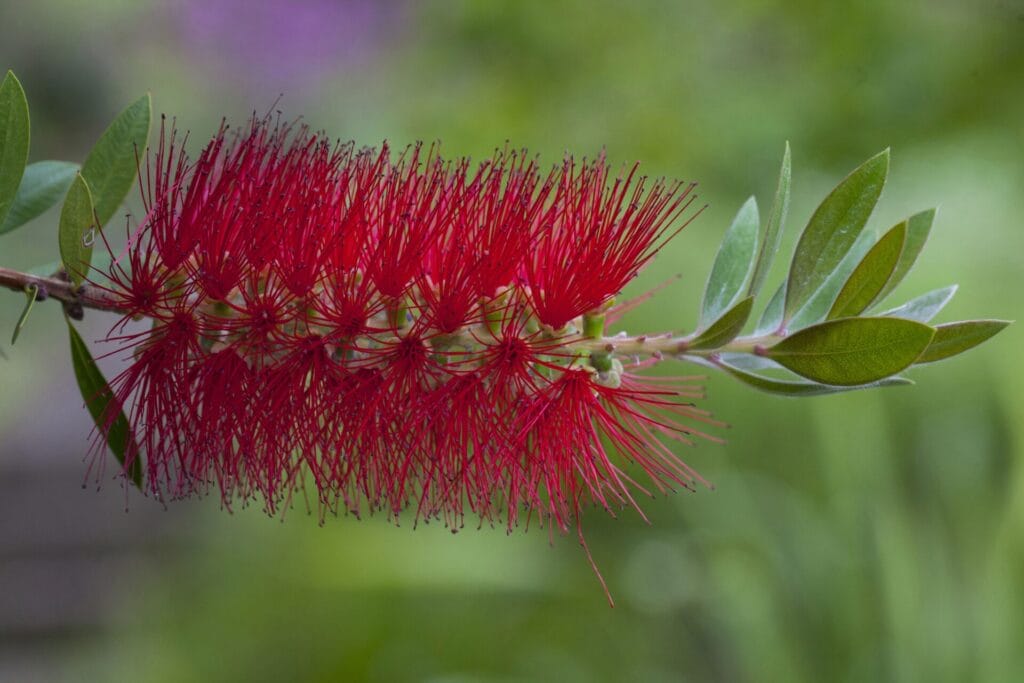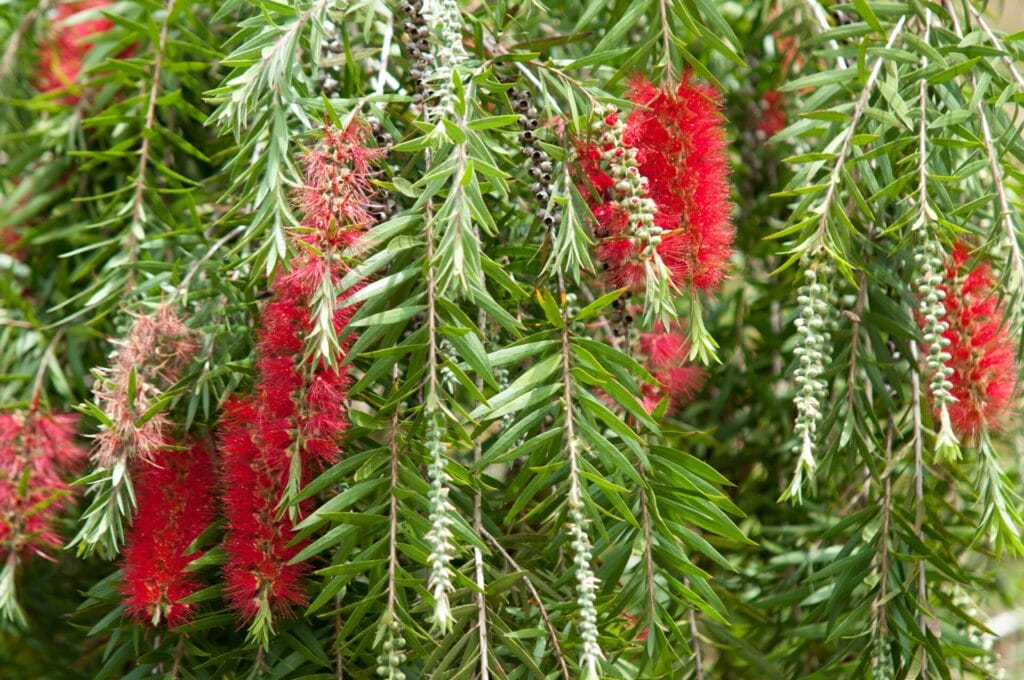Landscaping Ideas
Bottlebrush
By Innovation Grounds
Bottlebrush plants are popular for their unique, striking flowers and easy maintenance.
Overview
- Scientific Name: Callistemon spp.
- Common Names: Bottlebrush, Red Bottlebrush, Weeping Bottlebrush.
- Family: Myrtaceae
- Native to: Australia, with species found in various regions.
- Plant Type: Evergreen shrub or small tree.

Growing Conditions
- Sunlight: Full sun to partial shade. The more sun, the more flowers it will produce.
- Soil: Well-draining soil is essential. Bottlebrushes are tolerant of poor soil but prefer slightly acidic to neutral pH (around 5.5 to 7.0).
- Water: Regular watering is needed during the growing season, but be cautious of overwatering. Let the soil dry out between waterings. Once established, it’s somewhat drought-tolerant.
- Hardiness Zones: USDA zones 9–11. It can tolerate mild frost, but severe cold can damage the plant, especially in non-native areas.

Uses
- Ornamental Plant: Commonly grown in gardens or as a hedge or screen due to its attractive flowers.
- Wildlife: The flowers are a favorite of birds, especially nectar-feeding species like hummingbirds.
- Tolerances: Tolerant of salt and wind, making it a good choice for coastal areas or exposed locations.

Interesting Facts
- The plant’s flowers are rich in nectar, which makes them a vital source of food for bees, birds, and butterflies.
- Some species are even used in traditional Aboriginal medicine.


